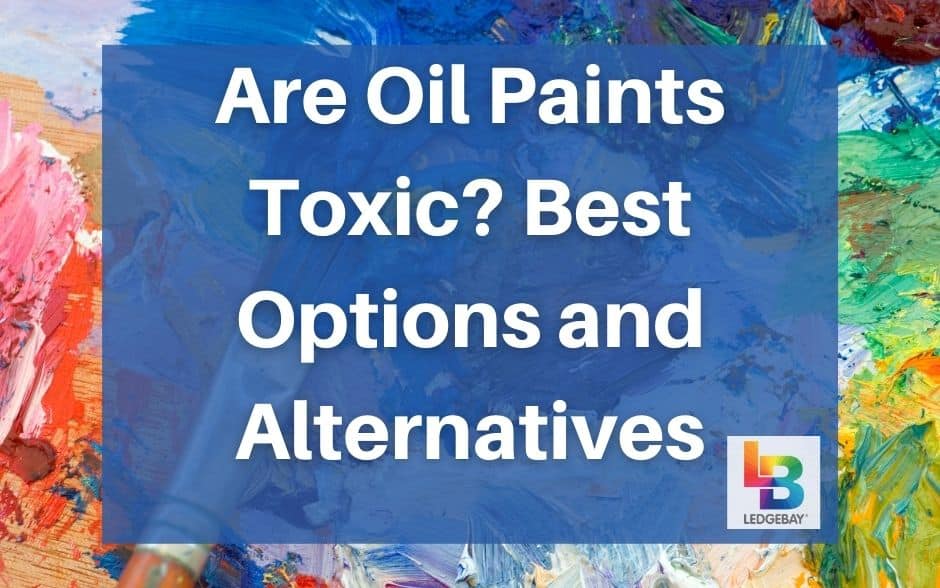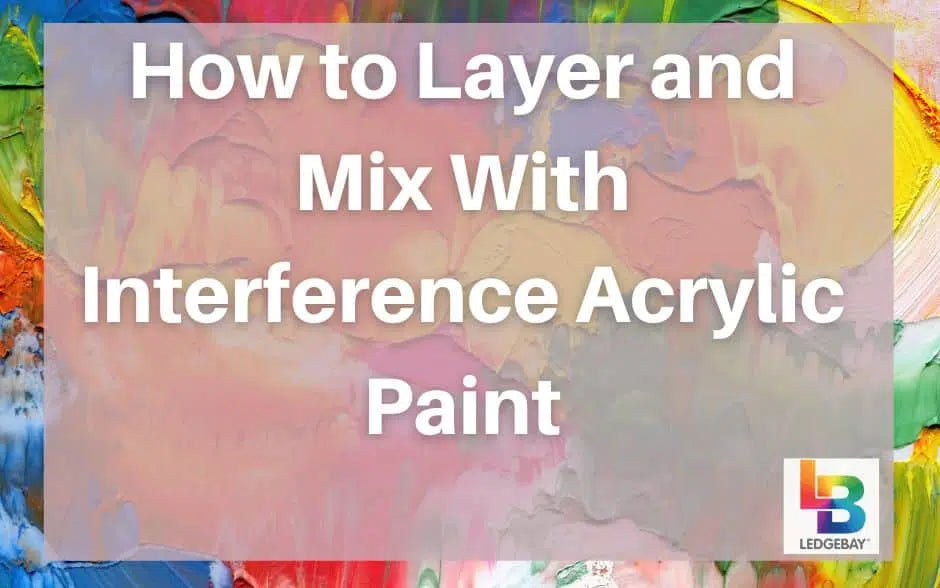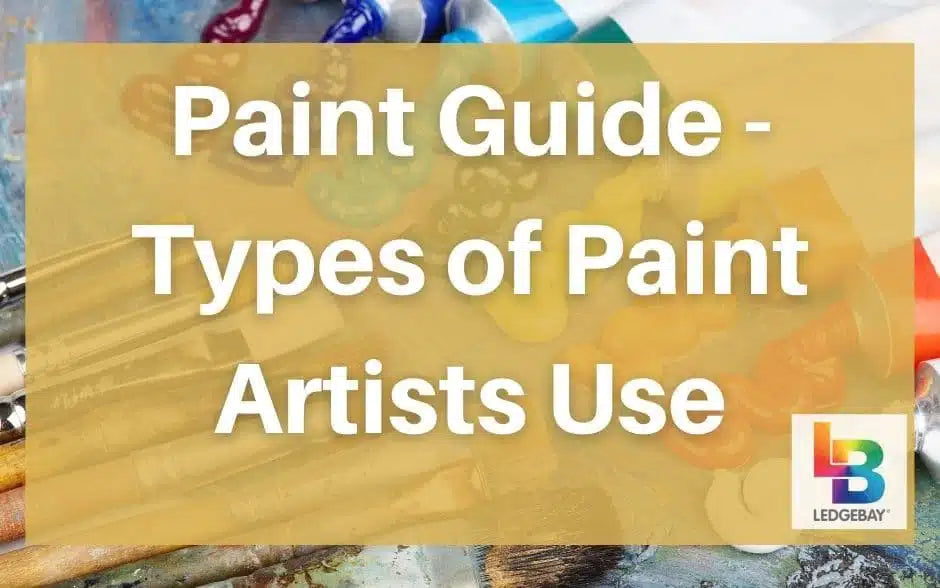While selecting gifts, we always pay attention to their safety and purity. In this article, we answer the question are oil paints toxic? And what you should know about the toxicity of allartistic paints on the market.
Human beings have always been fascinated with art. Thenumber one activity that children do at school is coloring . This can progress into painting, one of the most recommended activities for adults who need a relaxing yet productive way to spend their free time.
Oilpaint is one of the most popular types of paint artists use. They usually prefer using it because it’s intensely pigmented. Nevertheless, it can be toxic and harmful to our health.
Luckily, there is an alternative on par withoil paint , and that’s acrylic paint. It delivers an astounding performance without toxicity.
Are Oil Paints Toxic?

Oil paint , in and of itself, isn’t toxic. Nevertheless, many solvents and mediums go into the oil painting process, which can change our answer.
When you paint, you don’t always use a brush, paint, and a canvas only. Instead, you’ll need other materials, such as solvents and varnish, to prepare the canvas, adjust thepaint’s pigment and viscosity, and add the final touch to protect your painting from reacting to its surrounding environment.
These additions are what make oil paint toxic and harmful to us and the environment.
What Is Oil Paint Made of?
[amazon box="B07WSLZY4G"]
Oil paint is made of pigment particles suspended in oil—usually linseed or walnut oil. Theoils used in paint are generally natural and non-toxic.
Most pigments used in oil paint aren’t toxic, but if you grind your paint or sand your paintings, the dust particles from these processes can be dangerous if inhaled.
Moreover, some pigments may containtoxic heavy metals .
Heavy Metals
Heavy metals are, without a doubt, toxic. They can travel inside the body through cuts and grazes in the skin, or they can be inhaled if they’re in the form of dust particles.
Nevertheless, they won’t have an immediate effect the moment you come in contact with them. Pigments based on lead-white, cobalt, manganese, and cadmium can be harmful if they’re ingested in large quantities, come into contact with the skin for a prolonged period, or inhaled in the form of particles consistently.
Solvents
In chemistry, a solvent is used to dissolvesolutes to create a solution. In painting, it’s used for improvingpaint’s consistency and cleaning brushes .
Depending on the type of solvent you use, you can thin out or thicken the oil paint.
Solvents are also used to clean out brushes. Because this type of paint is oil-based, it may be difficult to wash it out of material. That’s why painters turn to solvents for the cleaning process.
Unlike water, solvents don’t evaporate, but they exude fumes into the air that are toxic. Constant exposure to these fumes in a confined space can result in adverse effects, such as dizziness.
Varnish
[amazon box="B06Y477JTC"]
Varnish is added at the end of thepainting process on oil paintings as a protective layer . It prevents any dust anddirt particles from sticking to a painting .
Most varnish containsresins and solvents, which are toxic if inhaled or ingested. In addition, as varnish dries, it exudes pungent fumes that can cause headaches, lightheadedness, and even skin irritation.
Are Acrylic Paints Toxic?

Acrylic paint isn’t toxic for the most part. It contains pigment, acrylic polymer emulsions, and acrylic polymer as abinder . Therefore, when it dries, it exudes ammonia, propylene glycol, and water into the air. These are safe and may not affect anyone negatively.
Heavy Metals
Like oil paints, the pigment inacrylic paint can be toxic if it’s based on heavy metals. Nevertheless, acrylic paint manufacturers, likeUtrecht , have created almost identical versions of these pigments.
Solvents
Although you can use solvents withacrylic paint , there’s no need to subject yourself to that risk. Withacrylic paint , there are far easier methods to thin out or thicken the paint’s viscosity.
Becauseacrylic paints are water-based, you can thin them out by mixing them with water. If you want to thicken the consistency, you can combinethe acrylic gel with the paint.
This also makes the cleaning process relatively easy. You can simply wash yourbrushes and painting material with soap and water. Nevertheless, make sure that theacrylic paint doesn’t completely dry because then it becomes harder to remove.
Varnish
Traditionally, varnish has been used as a way of protecting paintings from sunlight and dust particles. It even performs as a temporary layer that you can remove after collecting all the smoke, dust, and dirt in deep cleaning.
Still, varnish has its disadvantages. First of all, it contains toxic solvents. Moreover, a varnishmade from natural resin and synthetic varnish tends to turn yellow and discolor as time goes by.
According toresearch , the remaining varnish on old paintings may contribute to its discoloration. That’s why even renowned institutions, like theSmithsonian , don’t recommend varnishing acrylic paintings. In addition, if you’re looking to remove the varnish layer, you may need a solvent, which can damage theacrylic paint in the process.
Many acrylicpainters don’t varnish their paintings . This is because high-quality acrylicpaint doesn’t need protection from the elements, and the colors won’t change or fade for a long time. Thepaintings just need to be kept out of direct sunlight.
Disadvantages of Acrylic Paint and How to Avoid Them
[amazon box="B089P1M2JD"]
There are still some people who look down on acrylicpaint for the mere reason that it’s classic oil paint. However, both types of color have their pros and cons, so the choice might be relative.
It’s essential, though, to consider the added health risk that oil paints can pose. Although you can establish some measures and precautions to protect yourself and anyone else from the threat of oil paint, it’d be much easier to use an alternative that performs almost the same.
Some may argue thatacrylic paints are riddled with disadvantages, but I beg to differ. Therefore, here are some of these disadvantages and how to overcome them:
Darker Finish
Acrylic paints tend to dry darker, making the process of matching colors all the more difficult. This happens because of the acrylic emulsion, which has a milky color when wet and transparent when dry.
This can be easily corrected by adding a slight touch ofTitanium White orZinc White , and the paint should darken to the desired shade as it dries.
Drying Too Fast
Sometimes, the problem withacrylic paint is that it dries almost too fast, which may even hinder the blending process. However, if you remember,acrylic paint dries by evaporation. So, if you maintain an appropriate humidity level, the color can dry slower,giving you time to paint .
Acrylic paint won’t dry on a wet surface. Therefore, you can mist the back of thecanvas , which will act as a damp surface. You can also use a stay-wet palette, so thepaint doesn’t dry fast while you’re using it.
In Conclusion
Despite the numerous advantages ofoil paint , it still poses a great risk every step of the way. This seems unnecessary when there’s another safe, cheap, quick alternative.
What’s even more remarkable aboutacrylic paint is that you can use it to create 3D sculptures. It sounds slightly unlikely; however,acrylic is malleable enough that it can be peeled off of a non-stick surface and shaped into a soft sculpture.
Evidently, acrylic paints are incredibly versatile, which is why a lot of people arechoosing them over oil paints .
CLICK HERE to browse our complete selection of acrylic paint by numbers kits!











